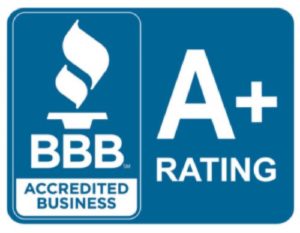Tree Elevation & Canopy Lifting
30 Plus years in the business has given us a PHD in sprinkler system service and repair
Tree elevation or canopy lifting
What is Tree Canopy Lifting, Anyway?
First, let’s break down the technicalities a bit to get a better idea of what lifting a tree canopy really means. Tree canopy lifting is a type of tree pruning that landscaping companies (and property owners) practice in order to protect their trees, property, and possessions. But what exactly does this mean?
Raising or lifting the canopy of your trees needs to occur when large, low branches start reaching down from the tops of your trees – in other words, when your canopies start to droop or sag toward the ground, raising the canopy can help to remedy this situation. Raising the canopy simply means using tools to shorten the low branches regularly to help suppress their growth. This type of landscaping work should be done of young, medium-aged trees, and definitely older mature trees.
What Difference Does It Make (and how do you do it?)
Now that you know what tree canopy lifting is, you might be wondering something like, ‘well, sure, it shortens the branches, but why does that matter? In some cases, we agree with you. Consider your favorite park. Does it have shady trees with long, low branches that cool you down on those hot, summer days? Probably so! But in urban areas, low hanging, droopy, sagging tree branches can mean trouble for people, property, and possessions.
Not only does this look less than desirable in lot of urban scenarios, it can obstruct vision, could possibly interfere with pedestrian and vehicular traffic, and can even be an incredibly dangerous hazard when mowing your lawn or when your neighbors have to walk in the street because your sidewalk has low hanging branches. This creates a hazard.
But why is this?
When tornado force winds, rain, and weather start to roll in, those droopy, saggy, and overall much weaker, tree limbs are going to be far more susceptible to snapping, breaking, and falling off, making it that much more dangerous for your property.
To lift the canopy of your trees, we suggest proactively working with young and medium-aged trees. Begin cutting and shortening their branches in order to stunt their growth and keep them from getting larger in their diameter. This will force more growth into the upper branches. By doing this (keeping your lower branches small), you’ll increase the value of the lower trunk if you should ever cut into it for lumber. As an added bonus, it makes the tree itself look taller because you’re removing the branches that are found at the lower base of the tree.
And who knows, with less branches, the trunk will likely get greater light indication, allowing for better, faster growth!
Why We Include Tree Canopy Raising in our Landscape Management Plans
Sounds simple enough, right? Though a relatively uncomplicated process, canopy lifting (or canopy raising), is incredibly important to many of the urban and commercial properties we care for. We choose to make this a part of our landscape management because we like to start the process early on and proactively with younger trees, then routinely keep up with this process in order to train the trees to stunt their growth.
Doctor Sprinkler chooses to make crown lifting a part of our landscape management for many reasons, but one of the biggest is because it helps your property look good. Commercial (and residential) properties with sagging, droopy limbs often look unkempt, and at Doctor Sprinkler, that’s the last thing we want said about our clients’ properties. Lifting the tree canopy also allows for healthier and faster growth for your trees because more light is able to pass under the tree.
We choose to ensure that this is part of our landscape management for more than just appearance, though. It’s also for safety purposes. Keeping access to footpaths and roads for pedestrians and vehicles, and it keeps the branches out of the way of obstructing vision, buildings, driveways, and more. It’s also a vital practice to implement right before tornado season, because, as we said, those large, droopy, weak limbs are the most likely pieces to splinter, break, or fall off the tree during high winds and bad weather.
Office
12161 Miami Street,
Omaha, NE 68164

